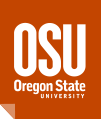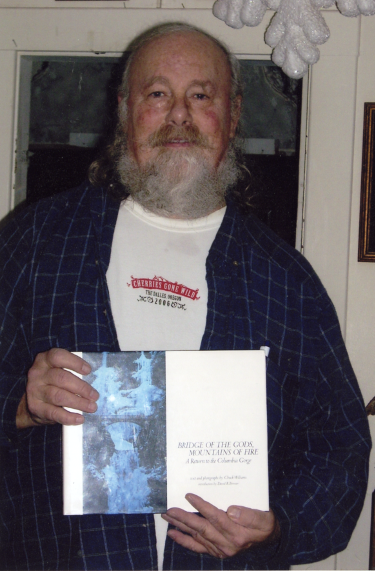Charles Otis “Chuck” Williams II (1943-2016) was an Oregon-based professional photographer and environmental activist. He was of Cascade Chinook descent and for many years a member of the Confederated Tribes of Grand Ronde.
Prior to his passing, Williams donated his materials to both Willamette University (WU) and Oregon State University (OSU). Willamette University’s collection, the “Chuck Williams Activist Papers,” documents Williams’s integral role in preserving the Columbia River Gorge, and highlights his leadership in the grass-roots activism that led to the National Scenic Act. Oregon State University’s “Chuck Williams Photographic Collection” is a part of the Oregon Multicultural Archives, which is dedicated to preserving and celebrating the histories of communities of color in Oregon. The photo collection includes thousands of slides, prints, and digital photographic materials that showcase Williams’ prolific career as a photographer during the 1980s-2000s. The photographs document the wide variety of cultural celebrations, landscapes, and tribal communities in Oregon and the Pacific Northwest. Together, these materials provide a unique perspective on Oregon, including topics such as environmental and political science, photography, and the state’s multicultural history.
Chuck Williams was a direct descendant of Chief Tumulth of the Cascades Tribe, who signed the (ratified) 1855 Treaty of the Willamette Valley. In addition to his work as a photographer, Williams worked as publications editor and public-information manager for the Columbia River Inter-Tribal Fish Commission in Portland, co-founded and managed Salmon Corps, and was the former national parks expert for Friends of the Earth. He also started the campaign for a Columbia Gorge National Scenic Area, and his land donation is now the Franz Lake National Wildlife Refuge. For much of his life Williams was based in The Dalles area, and by virtue of his work as a professional photographer, he attended events, festivals, and celebrations predominantly in Oregon and Washington. He sought out opportunities to document these events and his career flourished; in time, several organizations invited him to be one of their official photographers. Williams published the book Bridge of the Gods, Mountains of Fire: A Return to the Columbia Gorge in 1980, and In 1994, Williams opened his gallery, The Columbia Gorge Gallery, which was located downtown in The Dalles, Oregon.
Through Chuck Williams’ photographs, we have documentation of our state’s more recent history, highlighting Oregon’s thriving Indigenous communities and growing communities of color. The events he recorded during the 1990s and 2000s were held predominantly in Portland, but he also traveled to several of Oregon’s tribal communities. Celebrations highlighted within this digital collection include the Homowo Festival, a Ghanian harvest festival; the Obon Festival, a Japanese Buddhist celebration; the Cinco de Mayo Fiesta, a Mexican and Mexican-American celebration, and the Under the Autumn Moon Festival, a Chinese harvest festival. Also featured are three tribal community gatherings including the Confederated Tribes of Grand Ronde Community Powwow, the opening of the Confederated Tribes of the Umatilla Indian Reservation Tamástslikt Cultural Institute, and the Confederated Tribes of Warm Springs Pi-Ume-Sha Treaty Days Powwow.
Acknowledgements
In 2019, Oregon State University and Willamette University received a Library Services and Technology Act (LSTA) Competitive Grant to process the two Chuck Williams collections to make them available to the public. As part of the grant, the Oregon Multicultural Archives curated the exhibit “Legacy of an Oregonian Photographer: the Chuck Williams Photographic Collection” which includes a “behind the scenes” look into Williams’ life as a professional photographer as well as Williams’ photographs representing communities of color in Oregon. Williams traveled the state photographing a variety of Oregon’s Indigenous, Latinx, Asian-American, and African-American community events.

